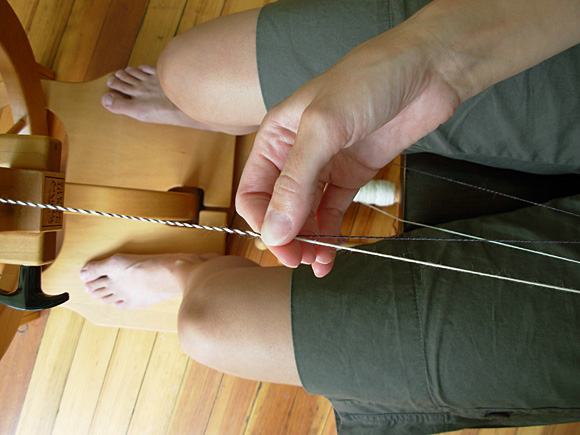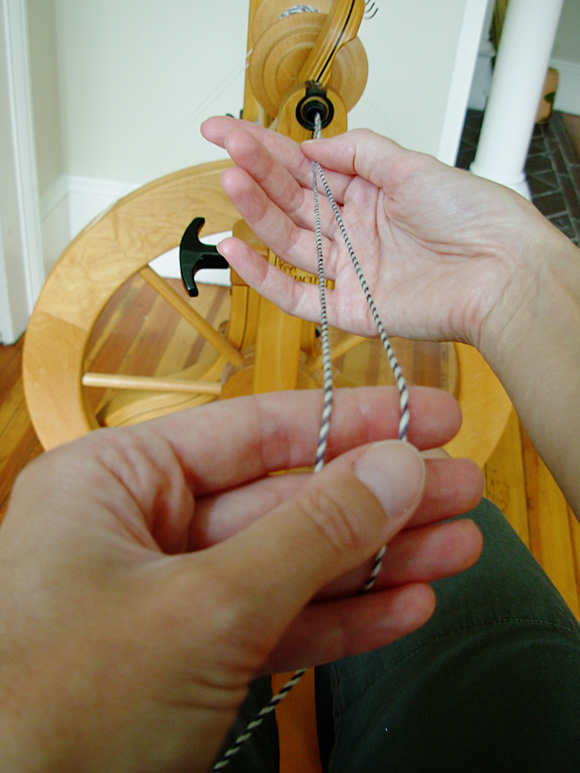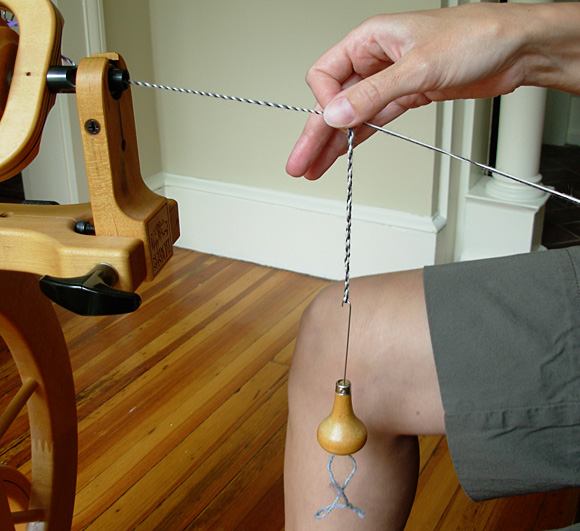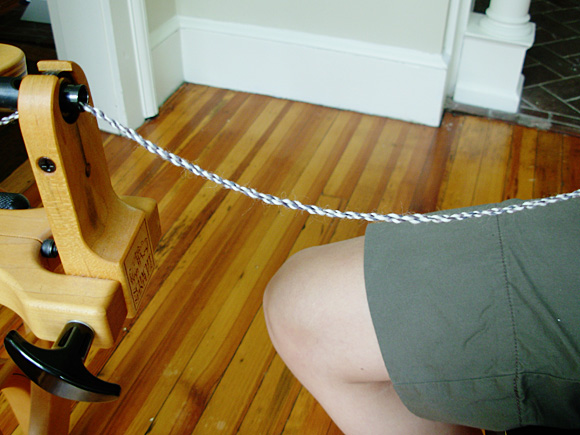|
|
| by Lee Juvan |
|
Begin by spinning your singles as you normally would for a smooth, two-ply yarn, and then allow the twist to set overnight. (I’m using light and dark strands here to make the process easier to see in photos.) Then ply the two singles in the opposite direction, making sure to add plenty of twist.

Your two-ply yarn will have an overabundance of twist energy, so you may find that you need to secure the ends with a bit of tape.

Once you have two bobbins of overplied yarn, don’t allow the twist to set: go ahead and cable your yarn right away so you can evaluate the twist energy in the final yarn. This time, your goal is a beautifully balanced yarn. You want to create your cable by plying in same direction that you used to create your original singles. For example, if I spun my singles S-twist (counterclockwise), I’d spin my two-plies with a Z-twist (clockwise), and then cable the two two-plies together with an S-twist again.

Test your yarn occasionally as you work by allowing it to hang down without tension to be sure that the cabled yarn is not over- or undertwisted.
How does cabled yarn behave when you knit it up? As with plump,
multi-ply yarns, cabled yarns give you great stitch definition—stockinette
is nice and smooth and cables really stand out. But cabled yarns
can be heavier and denser than other yarns with similar diameters,
so sample before you decide to spin a thousand yards for an elaborate
Aran sweater. You might find that you want to plan a finished
yarn that will knit up at a finer gauge to compensate for the
extra weight. Judith MacKenzie (in The Intentional Spinner and
in Spin-Off, Spring 2008) and Amy King (in Spin
Control) both offer excellent instructions for creating
cabled yarns and experimenting with their many variations. If
you’re a spindler, check out Abby Franquemont’s Respect
the Spindle for complete info on making cabled yarns with
only a handspindle. |
| ABOUT THE AUTHOR |
 You can see more of her work on Ravelry, where she is “workwoman,” and in Yarn Bombing: The Art of Crochet and Knit Graffiti by Mandy Moore and Leanne Prain. |
| Text © 2010 Lee Juvan; Images © 2010 Lee and Tom Juvan. Contact Lee |






